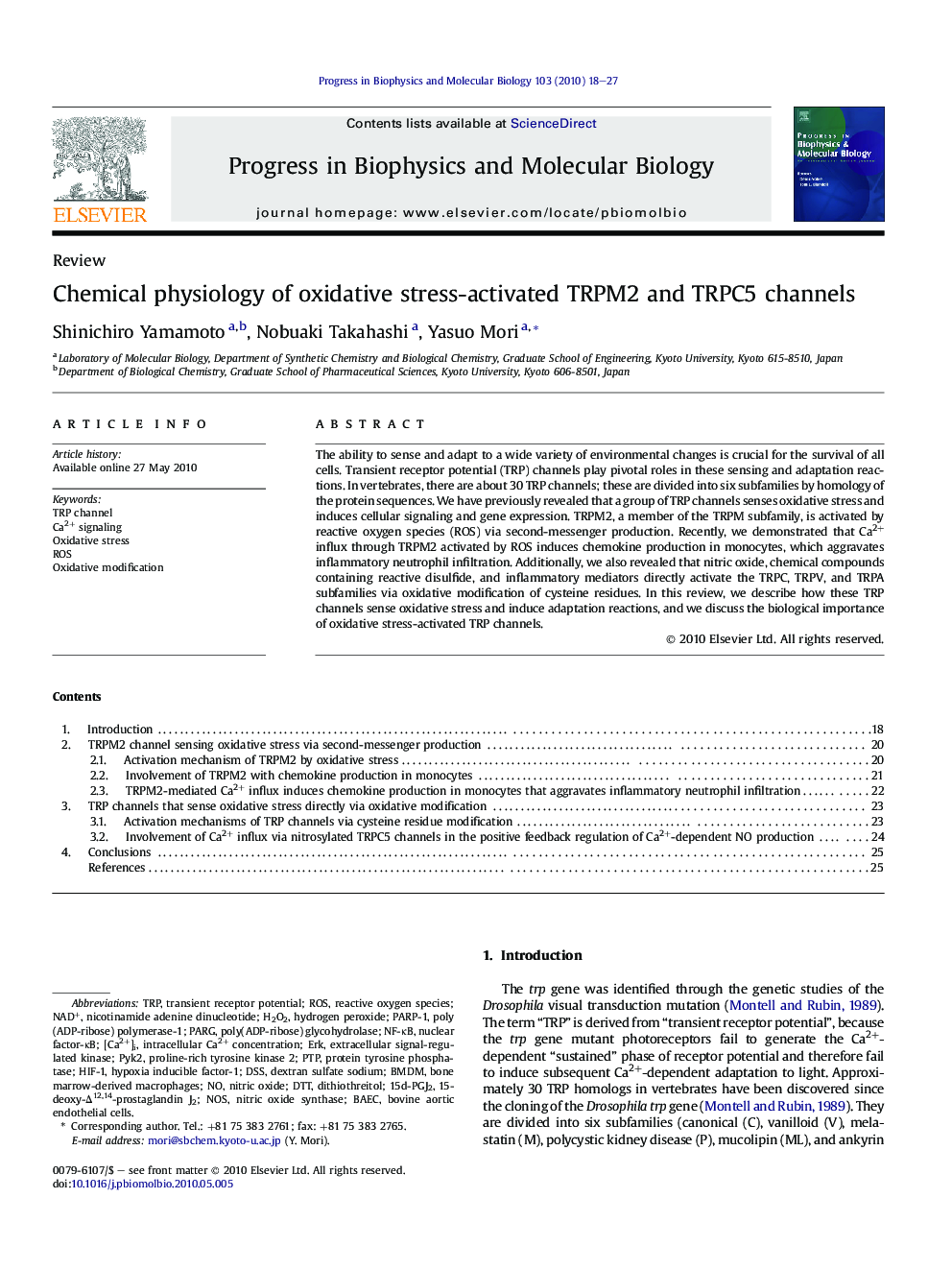| Article ID | Journal | Published Year | Pages | File Type |
|---|---|---|---|---|
| 2070597 | Progress in Biophysics and Molecular Biology | 2010 | 10 Pages |
The ability to sense and adapt to a wide variety of environmental changes is crucial for the survival of all cells. Transient receptor potential (TRP) channels play pivotal roles in these sensing and adaptation reactions. In vertebrates, there are about 30 TRP channels; these are divided into six subfamilies by homology of the protein sequences. We have previously revealed that a group of TRP channels senses oxidative stress and induces cellular signaling and gene expression. TRPM2, a member of the TRPM subfamily, is activated by reactive oxygen species (ROS) via second-messenger production. Recently, we demonstrated that Ca2+ influx through TRPM2 activated by ROS induces chemokine production in monocytes, which aggravates inflammatory neutrophil infiltration. Additionally, we also revealed that nitric oxide, chemical compounds containing reactive disulfide, and inflammatory mediators directly activate the TRPC, TRPV, and TRPA subfamilies via oxidative modification of cysteine residues. In this review, we describe how these TRP channels sense oxidative stress and induce adaptation reactions, and we discuss the biological importance of oxidative stress-activated TRP channels.
